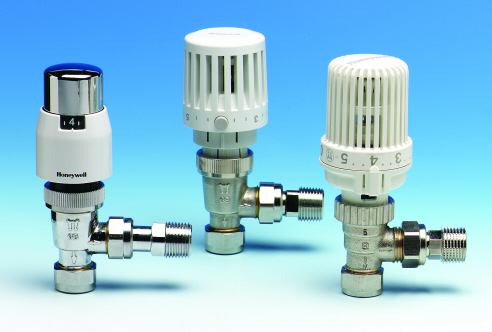TRVs, or Thermostatic Radiator Valves, are devices used to control the temperature of a room by varying the amount of hot water that is pumped into the radiator.
An investment in a TRV that allows you to independently regulate the temperature of each room in your home might result in significant savings in both time and money.
Even when your major heating source is a boiler system, you may still create different heating zones in your home with the help of thermostatic radiator valves, provided you install them in the right places.
You may regulate the temperature of a room and the radiator’s output with a temperature-controlled radiator valve (TRV).
Table of Contents
What is the purpose of a TRV?
A radiator thermostat Valve eliminates the need to manually adjust the water temperature just before it reaches the radiator. A valve consists of just the head and the body, with the head naturally resting atop the body.
The TRV may be opened and closed with the simple movement of a pin within its body; this action triggers the expansion and contraction of a capsule within the valve’s head in response to changes in temperature.
Taking the pin out of the capsule will boost the radiator’s output, so if the room cools down too much you can warm it back up. The pin will close the valve and reduce the flow of hot water if the room temperature rises over a certain threshold. This will occur when more and more capsules of the same type sprout.
For temperature control, radiators use metal springs stuffed with wax or liquid in the form of valves. Many individuals have the opinion that liquid temperature regulators are the most efficient and trustworthy.
It follows that liquid TRVs are far more sensitive to temperature fluctuations than their wax counterparts.
While temperature changes can cause wax TRVs to expand or contract at different rates, liquid TRVs allow for instantaneous changes in water pressure.
Which pricing bracket does a thermodynamic radiator valve reside in?
Whether you buy them from us or somewhere else, the going rate for a pair of TRVs is about twenty pounds.
The cost of thermostatic valves varies according to their kind, whether they are filled with liquid or wax, and the filling medium.
To rephrase, the total cost of these radiator valves cannot be accurately estimated from a comparison of their TRV pricing alone, as the cost of installation must also be included.
If you need to empty your heating system for whatever reason, now is the time to replace the old radiator valves with the new TRV models.
A total of around £350 should be needed to drain the system and install TRVs on each of the roughly 10 radiators in the system.
Experts usually only freeze the pipes and put the thermostatic radiator valves on the radiator when replacing a single set. You should expect to pay roughly £120 (including the TRV fee) for this, or the equivalent of half a day’s worth of work in your area’s current going rate.
WHAT ABOUT THERMOSTATIC RADIATOR CONTROLS?
Thermostatic radiator valves are an optional addition to many people’s heating systems since they don’t see a need in buying them when they already have a thermostat.
You may avoid the hassle of manually altering the temperature in each room of your house when a TRV is installed, since you can maintain a custom temperature in each section of your home.
Heating unoccupied spaces might be costly if you just have one thermostat for your entire house’s radiators and use a central boiler for your heating and water needs.
Due to the high energy consumption of heating and hot water systems, homeowners can benefit greatly from the installation of a TRV in conjunction with other heating controls such as timers and radiator thermostats.
Energy savings from thermostatic radiator valves (TRVs) can vary by as much as 40 percent, depending on factors such as radiator efficiency, insulation, and placement.
To keep different parts of your home at a comfortable temperature, you must “zone” your heating system.
The overall home temperature is displayed together with the room temperatures.
The typical temperature of a person’s living room is 21–22 degrees Celsius, which is just right for relaxing in front of the television after a hard day.
If the temperature in a room is over 20 degrees, even the hardiest of people will find it intolerable without the Tado TRV.
If you have many zones in your home, each with its own radiator thermostat, you can reduce your heating costs. By establishing individual temperature settings for each room, you may save money and avoid wasting energy heating unoccupied spaces.








